At the Victoria and Albert Museum there is a small, 12th Century AD sculpted model of what seems like a typical north/east Indian temple. It’s a replica of the Mahabodhi Temple – a sacred souvenir carried home by ancient pilgrims who visited the site of the Buddha’s enlightenment from beyond Indian boundaries – the journey in
At the Victoria and Albert Museum there is a small, 12th Century AD sculpted model of what seems like a typical north/east Indian temple. It’s a replica of the Mahabodhi Temple – a sacred souvenir carried home by ancient pilgrims who visited the site of the Buddha’s enlightenment from beyond Indian boundaries – the journey in this particular case was from Tibet.
My quest to understand the Buddha and his teachings was spurred on by the travels of the celebrated Chinese pilgrim Xuanzang. He inspired me to travel first to Sri Lanka and then revisit Bodhgaya. Accompanied by my parents I went to Bodhgaya in 2010, and then later in 2017 to offer ‘pind daan’ to my grand parents at the Vishnu Pad temple in Gaya.
Over the seven years my relationship with the Buddha had changed. Mere intellectual curiosity had given way to faith. The pressing urge earlier to make sense of his doctrines to be able to write about them, had morphed into a calm reverence and spiritual engagement.
My readings had informed me that after a prolonged efflorescence Buddhism had been wiped out from the country of its birth. By the 13th century AD, the combined effect of waning patronage, raids of marauding iconoclasts and the resurgence of Hinduism led to the virtual demise of Buddhism in India. Though by then it had successfully migrated transnationally and prospered in the far east – one of India’s greatest exports.
By the time the British arrived, Buddhism was virtually forgotten in India. The Buddha had conveniently been absorbed into the Hindu pantheon and accorded mythical status. Any claims of historicity linked him to China, even Ethiopia, India wasn’t even a passing suspect! The sacred places of Buddhism were in ruins, or passed off as Brahmanical establishments.
So forgotten were its antecedents in India that the British had to painstakingly piece together archaeological evidence, sacred texts, accounts of ancient travellers who traversed thousands of miles under perilous circumstances to visit the holy land to set the story of Buddhism in perspective. Gautam Buddha emerged from the shadows of myth and lore and was conclusively placed as a historical figure. The Mahabodhi temple was restored, a humungous task considering that the edifice was in ruins, buried under rubble, and appropriated by Hindu priests. Interestingly an ancient model of the temple, much like the one at the V&A was used to reconstruct the temple.
I wondered if there would have been a complete effacement, a total erasure of the words and deeds of the buddha from hearts and minds of India’s populace. Would there have been some, perhaps an underground group who still held the Buddha in adoration? The influence of Buddhism on Hinduism has been much written about, perhaps that was the one way in which strands of the forgotten religion still stayed alive, assimilated and absorbed into a belief system that the Buddha himself had strongly denounced.
Textual references record that the first construction at the site could have been by the great Mauryan emperor Asoka, who had made a pilgrimage to the site. A relief from the famous 1st Cent BC stupa at Bharhut (the remains of which are now housed within the Calcutta museum) shows a two-storied hypathareal shrine enclosing the Bodhi tree, and also what looks like an Asokan pillar with an elephant capital. The Mahabodhi finds consistent mention in the travelogues of intrepid ancient pilgrims who travelled from far and wide. The Buddha himself had accorded it a must visit status, telling his aide and disciple Ananda, “There are four places, Ananda, that a pious person should visit and look upon with feelings of reverence….Here the Tathagata was born! Here the Tathagata became fully enlightened in unsurpassed, supreme Enlightenment! Here the Tathagata set rolling the unexcelled Wheel of the Dhamma! Here the Tathagata passed away into the state of Nibbana in which no element of clinging remains!”
Reflecting on these antecedents ,I stood atop the stairs that descend into the main temple precinct. At that moment one feels poised towards a momentous encounter with the divine. The soaring pyramidal roof, the fabled “stairway to heaven”, the Buddhas and Bodhisattavas carved in the uncluttered niches, myriad votive stupas dotting the foreground – the pious offerings of ancient devotees- all speak of the sacred. While some contend that the temple is largely a 19th century reconstruction, it holds in its core a 6th century brick structure making it one of the oldest brick temples in the country. However, irrespective of the antiquity of the structure, one cannot take away from the significance of the place where an ordinary mortal, through his superhuman feat found place among the immortals. This is where a prince broke through the shackles of the illusory world – mythicized as his victory over Mara – and witnessed the transcendental truth. He spoke of suffering and preached a way to overcome suffering, of leading a righteous life and strenuously exerting to find the Buddha within. His was a practical doctrine, which appealed to all- not hidebound as the Brahmanical faith had come to be, it came as a salve and succour to those shunned and oppressed by the Vedic faith. Some say the Buddha was a medicine man, curing the world of its ills.
The story of Buddha might have ended unknown had it not been for the divine intervention of Brahma who induced him to venture forth and share his wisdom with others. The Buddha had then been contemplating entering into complete extinction soon after his enlightenment. He gave up that idea only at the behest of Brahma who implored him to “become a teacher of mankind, the teacher of the gods, the teacher of the created world” – and that he should “open his path to all”
The sanctum is the central focus for any devotee. The large gilded buddha image with its half closed eyes and hand in bhumisparsha mudra recalls the transformational feat of the Buddha. Calling the earth to witness his transcendental achievement the Buddha became all awareness, all being. In the realms of thoughtlessness, in the dimensionless totality he found profound wisdom. Though the Buddha spoke of Anatta- no self/soul , my Upanishad informed world imagined that the Buddha in the moment of transcendence had merged into one-ness with the Supersoul – “I am That”.
The original image had been known to be fashioned by the Buddha to be, Maitreya and was said to be beautiful beyond conception. The current central image had been found in the precincts of the temple and had been installed in the sanctum by the british archaeologist Alexander Cunningham. It is an icon befitting the site and its significance. On my visit in 2010, I had been packed inside the sanctum with a group of Bhutanese pilgrims who chanted in chorus to a recorded prayer, as the words spilled out from the player, I witnessed first-hand the overwhelming energy of faith, its ability to bind, to bring together.
Post enlightenment, the Buddha remained in retreat for seven weeks near the bodhi tree to consider the supreme knowledge he had attained. Perhaps he reflected on all that he was now aware of, ruminating on the profundity of his realizations. I spent a little more time at the muchalinda lake, the site where at the brewing of a storm a naga, coiled his body seven times around the Buddha and placed his hood over the Buddha’s head to protect him from the rain. After seven days the rain stopped and the snake changed into a young man who paid his respects to the Buddha. The Buddha then said: “Happy are they who are contented. Happiness is for those who hear and know the truth. Happy are they who have good will in this world towards all sentient beings. Happy are they who have no attachments and have passed beyond sense-desires. The disappearance of the word “I AM ” is indeed the highest happiness.” Words that echo the holy words of the Hindus as well, indicating that despite their divergences there is sameness in the spiritual philosophies of India. Indeed, bliss pervades those who shun attachments, who give up the shackles of the senses – In the Gita, Lord Krsna states “O Parth, when one discards all selfish desires and cravings of the senses that torment the mind, and becomes satisfied in the realization of the self, such a person is said to be transcendentally situated”. When one drops off identification with the gross Body, the I-ness of the ego is given up, then there is freedom, there is assimilation of the divine. The limited sheds itself to the infinitude of the limitless.
I hung around at the lake, more so because the chthonic and the folk appeal to me. In antiquity Nagas and yakshas were “popularly regarded as protecting genii and the bringers of prosperity”. Nagas symbolize the life force of fertility and birth. They are the guardians of the sustaining, nourishing terrestrial waters. Buddhism expediently absorbed such cults into its fold, thereby furthering its appeal and reach. In the artistic expressions on ancient Buddhist monuments , nagas are a frequent presence
The significance of the Bo-tree cannot be expressed enough, its immediate ancestor was witness to the Buddha’s superhuman achievement. In Buddhist mythology, it is considered to be the navel of the earth , springing up miraculously on the day of the Buddha’s birth. It is believed that there are many Buddha’s and each has a specific tree associated with him, Sakyamuni Buddha being associated with the Ficus Religiosa or the peepul tree. Tree worship goes back eons into the sacred traditions of India, finding place even on Indus valley seals. I peeked inside the railing surrounding the revered tree to look at the adamantine/diamond seat, the vajrasana where the Buddha is said to have meditated. In the words of Xuanzang it is the central place of the Universe . “In using the word diamond one indicates that it is firm and indestructible. If the seat were not as strong as diamond then no part of the world would support one who has entered samadhi of perfect fixedness (Vajra samadhi)” . I felt a bolt of glee to see a row of geese/hamsa and honeysuckle carved on the vajrasana. As I sat down to meditate near the Bo-Tree, I thought of their symbolism. In the words of the Buddha . “The geese move in the sky by magic, the wise are lead away from the world having vanquished Mara and its host”. Within the limited gross existence are to be found the seeds of transcendence, one just has to rid oneself of ignorance. We like the hamsa are citizens of the two spheres’ one hand earth bound, limited “in life strength in virtues and in consciousness”, but on the other hand a manifestation of the divine essence, which is unlimited, immortal, virtually omniscient and all powerful . We like the wild goose, are citizens of the two spheres. We are mortal individuals bearing within ourselves an “immortal supra individual nucleus” shrouded by the limiting individualizing stratifications of “the tangible gross frame of our physical nature and by the subtle sheaths of our animating”
Years have gone by since my visits and I have only just begun to fathom some of the masters teachings. I believe it was grace that took me there and it is with grace that I now understand that at its core the teachings are purificatory, that one must nurture within oneself the heart and mind of the Buddha. One must see the world through its interlinkages, its interconnectedness that a rose is a rose because of the gardener, soil, the rain, the sun, the planets, the entire cosmos. As it unfolds in its ethereal colours it brings together everything, so we all are dependent on all else, and so we must approach and engage with the world with a spirit of one-ness , reaching out with loving kindness, compassion and empathy.
 Scared Space
Scared Space 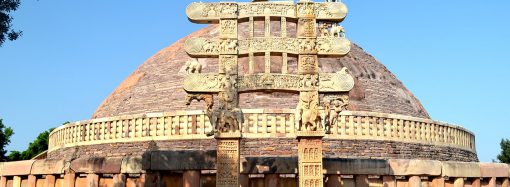
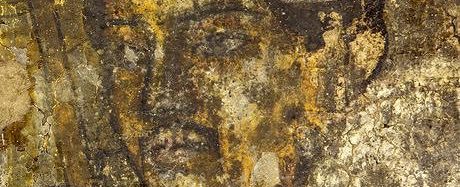
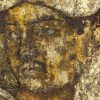
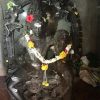
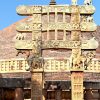

Leave a Comment
Your email address will not be published. Required fields are marked with *